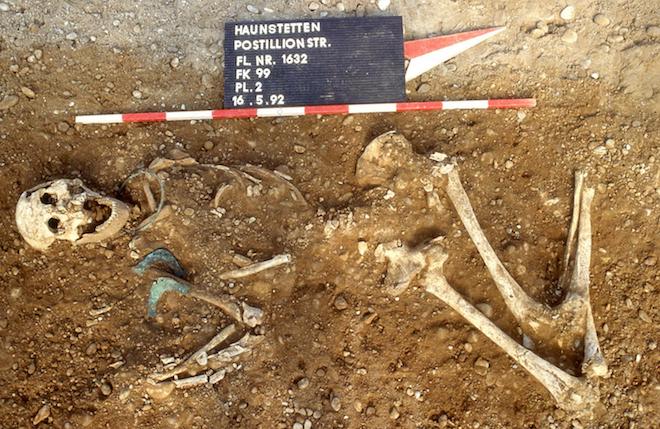
German archaeologists have examined Neolithic and Bronze Age human remains from burials in southern Bavaria and have found a pattern of mobility among women.
The research team conducted isotopic and DNA analyses on 84 radio carbon dated individuals who lived between 2500 BCE and 1650 BCE. Isotopic analyses, specifically strontium analyses, are extremely useful because the ratio of various strontium isotopes is location specific. Strontium, therefore, provides a map of where people were from and where they moved to by clues it leaves in teeth and bones. Strontium is absorbed by teeth very early in life, leaving a permanent record of where people lived during childhood. It’s also absorbed by bone. Bones change over time, however, so strontium extracted from bone tells researchers where individuals spent the last few years of their lives.
After extracting isotopes from the southern Bavarian burials, the German archaeologists discovered that most of the women and a few of the men migrated to the area as adults. However, there were no differences in how the migrants were buried - no “us versus them” discrimination in how people were treated. The research team says the burial treatment shows the migrants were fully accepted by their new communities. They also say they found no traces of the women’s offspring among the sampled group.
The German team says the pattern of female mobility persisted for at least 800 years and was a “driving force” behind communication between different populations leading to the exchange of ideas and technology in the region.
The group published the results of their study in the Proceedings of the National Academy of Sciences of the United States. Their article can be found here. http://www.pnas.org/content/114/38/10083



